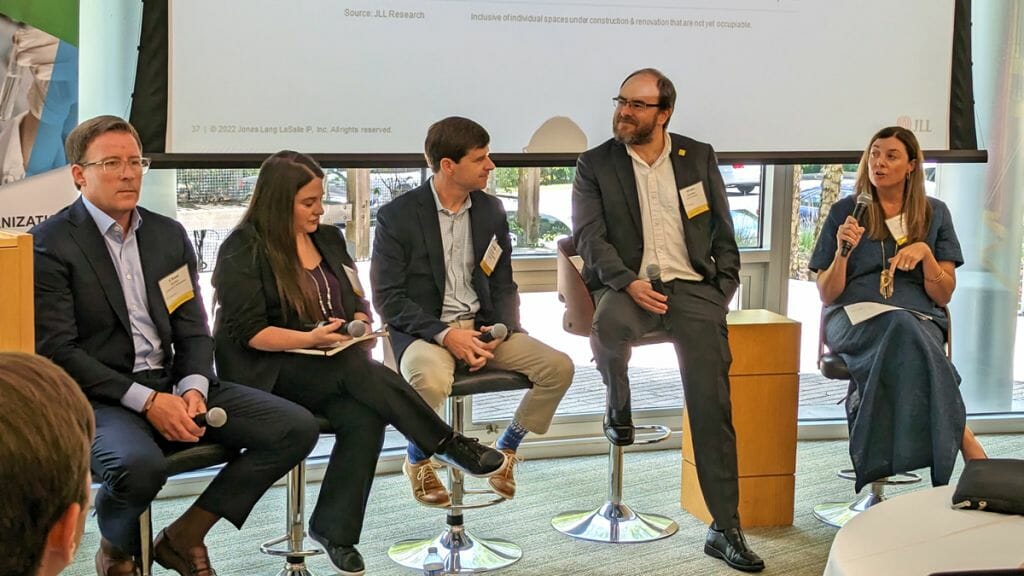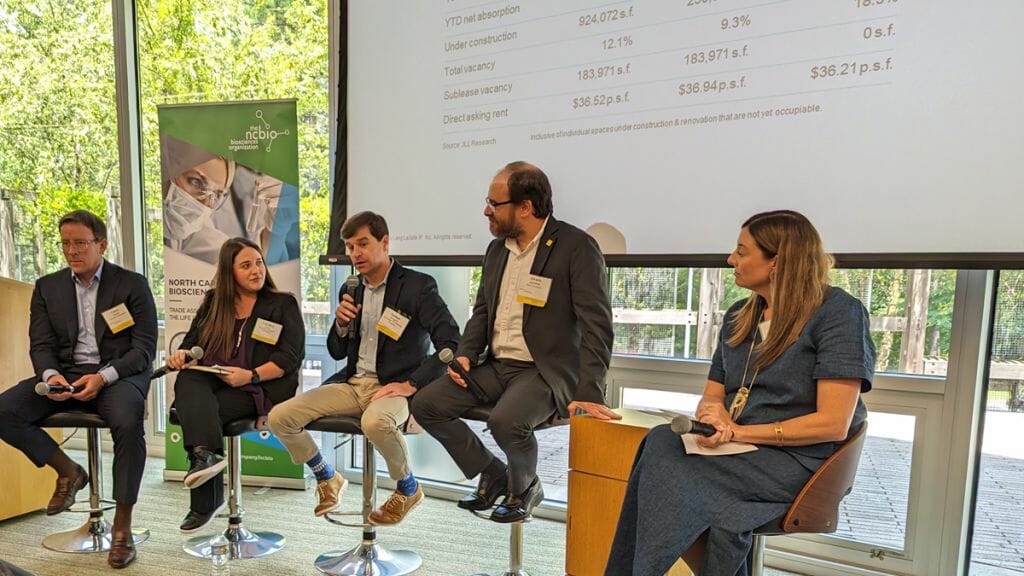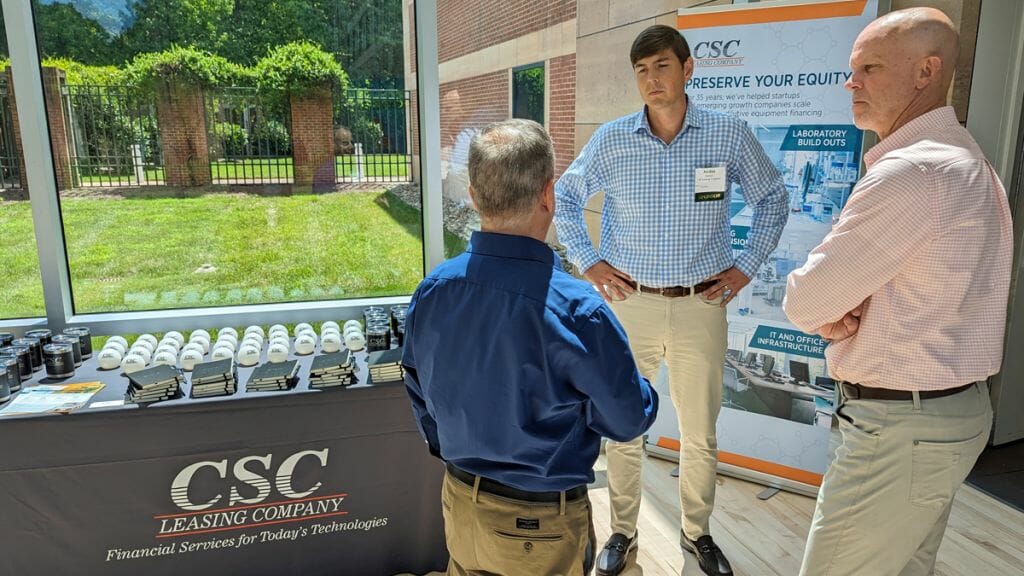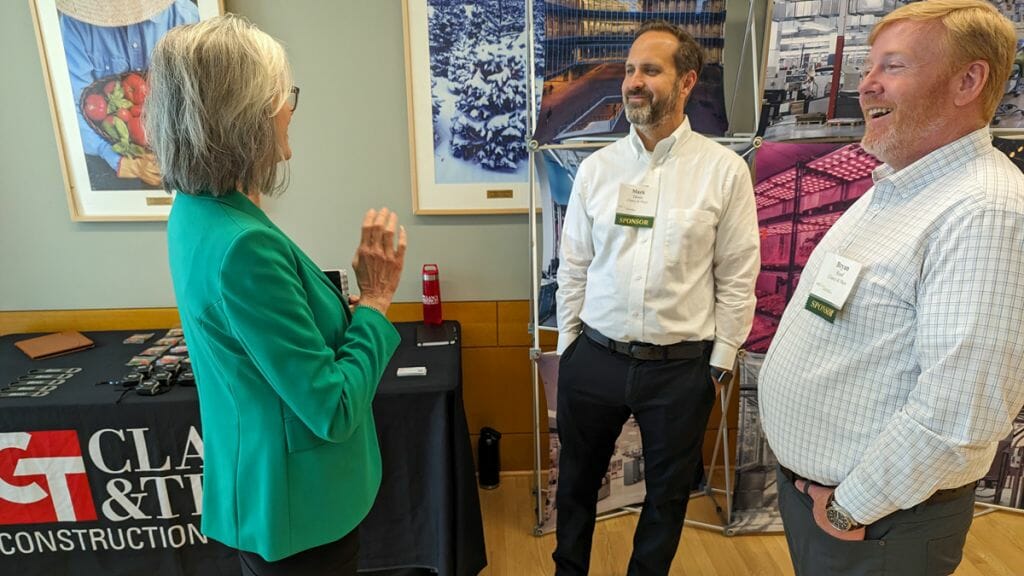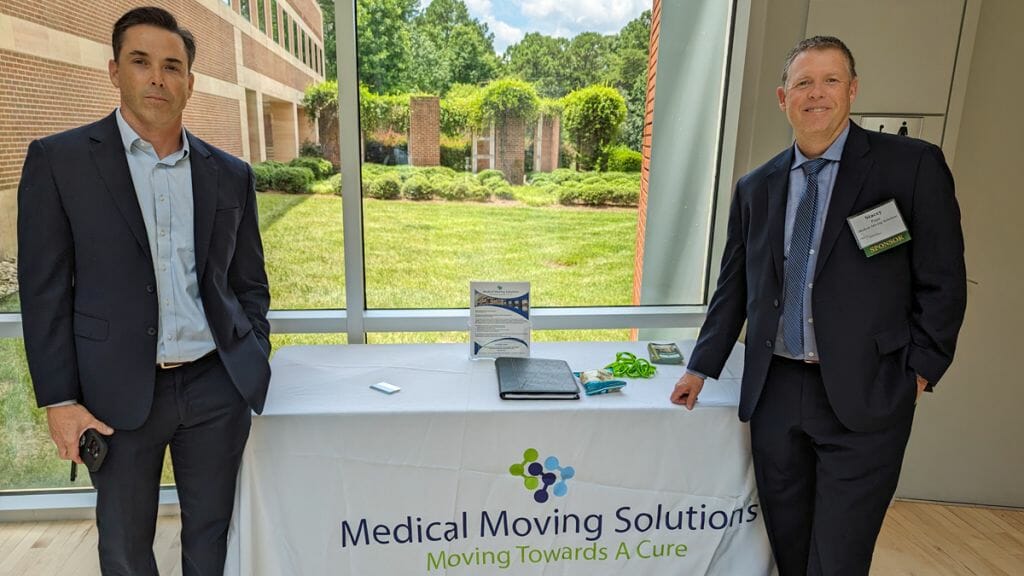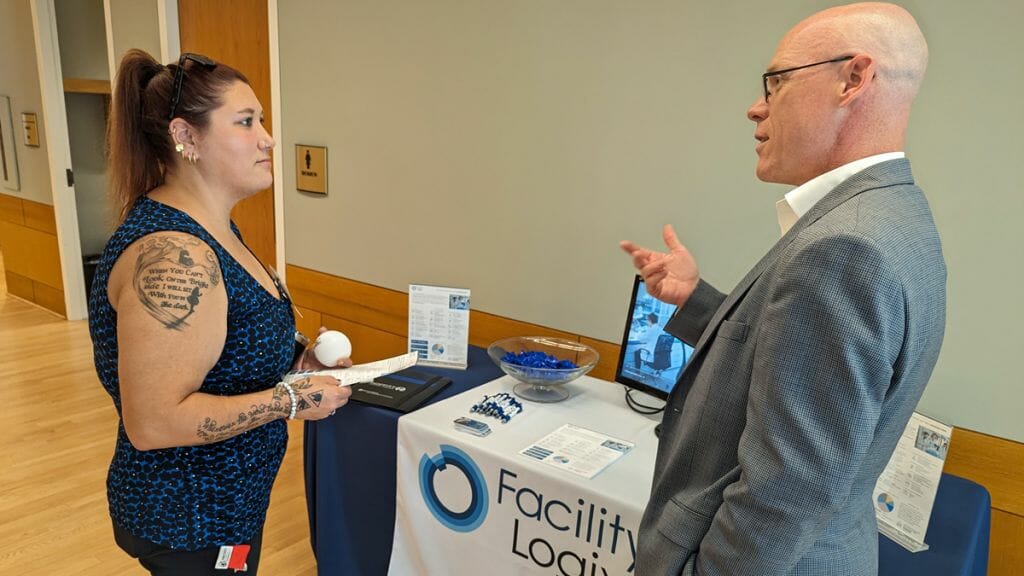Lab Space Forum panel explores the past, present, future of RTP
The full house attending the NCBIO Lab Space Forum held July 13 at the NC Biotechnology Center got a look into the past, present and future of real estate in Research Triangle Park.
Carolyn Coia, vice president, real estate for the Research Triangle Foundation, moderated a panel that included
- Ashley Ingram, vice president at Jones Lang LaSalle;
- Chase Kerley, managing director of life sciences for Crescent Communities
- Alvaro Quintana, associate principal and project designer with Flad Architects; and
- Nathan Swiggett, project director for McDonald York Building Company.
The forum was sponsored by Clancy & Theys Construction Company, CSC Leasing, Facility Logix, Medical Moving Solutions and PSC Biotech.
Coia led off with a review of the history of RTP, which was the brainchild of 1950s business leaders in Winston-Salem, Greensboro and High Point. At the time, North Carolina was known for tobacco, furniture and textiles with an economy that ranked 48 out of 49 states at the time. The Triangle was chosen because of its three research universities whose graduates were leaving the state in search of better opportunities.
The group raised $2 million that was matched but the state and used to purchase that 7,000 acres of farmland that would become the Park. Today, there is nearly 16 million square feet of space dedicated to life sciences operations in the Raleigh-Durham area occupy with a vacancy rate of just over 12%, according to JLL Research. There is more than 900,000 additional square feet currently under construction.
RTP today is adapting to a booming industry, a crowded neighborhood and a changing landscape.
What does the market look like right now?
Ingram said Jones Lang LaSalle was continuing to see steady real estate activity with more of it in the R&D space and speculative labs compared to the past three years.
“We’re just seeing a bit smaller requirements, maybe sub 20,000 square feet, where we were seeing much larger requirements 2020 through 2022,” she said.
Quintana said he thought small- and medium-size were finding space more easily now than they did a few years ago.
“It was like a jungle, everybody trying to get a space,” he said.
Kerley said Crescent was seeing about the same volume but the average size requirements are smaller now, around 100,000 square feet for those seeking GMP space.
“We designed our product speculatively so we knew we had to make sure we’re going to hit of the market in order to deliver a product that is going to be most attractive given the risk and the capital needed.”
What kind of space are tenants looking for?
Flexible space is obviously superior to spec space, Quintana said, but completely flexible space would have to be built completely to laboratory standards, even the portion that will be used for offices.
“The best-case scenario would be 100% flexibility in that space, which is almost impossible because you would need to pay for a really expensive building,” he said.
The typical split used to be 70% office and 30% lab, but now it’s more likely to be 60-40 or even 50-50, he said.
Kerley said there is less existing flex space on the market and that Crescent was trying to offer as much of it and as many options as possible in its new project. A 100,000 square foot floor plan will be designed so that it can be occupied by as many as four tenants with feature 32-foot clear heights throughout, ability to add mezzanines anywhere and multiple loading docks.
“We don’t put the floor in [before there’s a tenant], not because we’re cheap but because we want to make sure that, when they do come in with the utilities that it’s not going to cost them more to relocate, tear out the floor or put in structural support for equipment loads,” Kerley said.
What amenities are client asking for?
Kerley said that it was important for his company to build community to better people’s lives and that means a big emphasis on aesthetics and livability. Clients are asking for amenities like parks and trials, food truck courts, beekeeping areas and retail space.
“Having walkable, adaptable, accessible retail is very important,” he said. “We use to say that in RTP you had to drive pretty far to get a bite or grab lunch, but you can’t say that anymore. It’s exciting to see that happening in RTP because it was long, long overdue.”
Quintana said that Flad might plan a project with a dedicated building housing for amenities like a gym or a coffee shop that are shared by multiple clients.
“It's not only about designing the coolest lab,” he said. “It's about the whole shebang, the whole picture, and amenities is a big one these days.”
Ingram said that amenities are about quality of life and are becoming less optional.
“We’ve got one project in west Raleigh with indoor pickleball courts, we’ve got amphitheaters,” she said. “I would say if you don’t have an amenity building in a conversion project in RTP, then you’re behind, and you’re not going to be able to compete.”
How do we ensure accurate cost projections given persistent supply-chain issues?
"Over the past two to three years, it was really unpredictable,” Swiggett said. “I think right now, things are more predictable, more stable.”
Getting electrical, HVAC, elevators and anything with a computer chip in it in a timely manner can still be a challenge, he said. Bringing the contractor into process early allows the contractor to start checking sources for equipment and materials to determine where problems might lie and to find alternatives.
He said that McDonald York has in some cases been able to use temporary equipment to get clients up at running, but such arrangements usually require the support of the local permitting authority.
Quintana suggested getting pricing information earlier in the planning stages to help decide what’s most important to the client if they can’t have everything. Prices have changed significantly for projects that were started two years ago because of inflation, he said.
Where is the demand for life sciences space going?
“The Raleigh market all together is going to be very well received in the next three to ten years,” Kerley said.
There’s a pent-up demand for space from larger companies that are growing, and they’re in markets where rents are five times higher than they are in the Triangle.
“The cost of capital is going up, and we cost less,” he said, adding that there’s been $900 billion in venture capital and NIH dollars invested in the area over the past decade.

